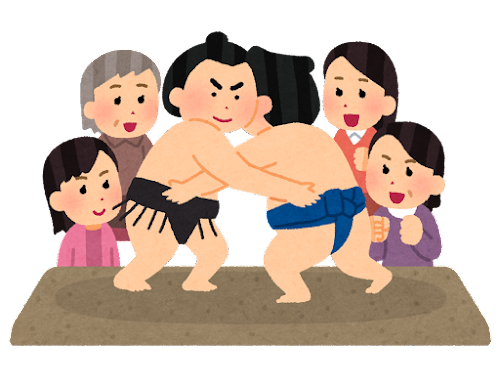Why sumo is a sport that entertains spectators
Wouldn’t you like to know about sports that are both entertainment and have a long history?
If so, this article is for you.
Here, I will explain sumo, the national sport of Japan.
Learn about the origins of sumo and why it is still popular today. So read on to know all about sumo.
1) Sumo history
Sumo wrestling dates back to ancient Japan, where it was used as a form of ceremonial combat.
Sumo was first recorded as a sport in the Nara period, when it was used to entertain the emperor.
Eventually, sumo became an entertainment for the common people, and by the Edo period it had become established as a professional sport.
2) Sumo wrestlers
Sumo has many stereotypes and idioms.
For example, sumo wrestlers have the image of being overweight and lazy.
But this is far from the truth. In fact, sumo wrestlers are surprisingly strong and extremely athletic.
I practice for hours every day and have strict dietary restrictions.
3) Sumo now
Sumo is still a popular sport in Japan and has fans overseas.
Many professional sumo tournaments are held throughout the year, and these events are often televised.
Sumo wrestlers also appear at various events.
4) Why sumo is a spectator sport
One of the reasons sumo is entertainment is that it is a very physical sport.
Sumo wrestlers often engage in long and exciting bouts.
There are also many rituals that take place during the match.
Another thing that makes watching sumo fun is that it is colored by history and tradition.
Summary
Sumo is both entertainment and a sport with a long and fascinating history.
If you come to Japan, be sure to watch sumo wrestling. I’m sure you’ll have a great time.
How to buy a sumo match
You can make a reservation from the official website.
Please enjoy yourself when you come to Japan.
Chanko nabe : a Japanese hot pot dish
Chanko nabe is a Japanese hot pot dish made with various meats and vegetables.
In sumo stables and sumo wrestlers’ homes, it is often eaten in a large pot.
Chanko nabe is also a standard menu item at sumo wrestler restaurants in Tokyo.
The origin of chanko nabe is unclear, but it is believed to have been invented by a sumo wrestler in the Tomozuna stable during the Edo period (1603-1868).
It is believed that the name chanko nabe is derived from ‘chanko,’ a type of hot pot eaten by Chinese workers during the Edo period.
Chanko nabe is typically made with chicken, fish, beef, pork, and various vegetables. Dashi is generally made with dashi, soy sauce, and mirin.
Ryogoku Kokugikan
Ryogoku Kokugikan is the main venue for sumo wrestling in Tokyo.
In 1784, the first sumo tournament was held at the Ryogoku Kokugikan, and in 1909 the first permanent sumo hall was built.
The current stadium was completed in 1954 and has a capacity of 11,094 people.


